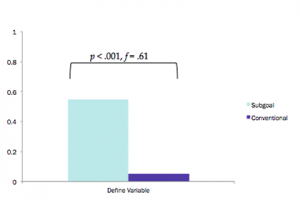|
Our project on the human rights of Indian farmers. It is estimated that more than a quarter of a million Indian farmers have committed suicide in the last 16 years—the largest wave of recorded suicides in human history. By immersing the user in a rural farm in India, our goal is to foster understanding reinforced by dramatically motivated actions to express the dire living conditions and desperation of the farmers and their families. |
Exploration in using the sensation of wind as a computation interface and calm technology. |
A virtual reality experience in a dystopian world. With Love, Thunderbird is the story of a woman, nick-named Thunderbird, Peter and the struggles they face living in a society ruined by an unsuccessful coup and a string of useless ‘presidents’ who only accomplished increasing the inflation and unemployment rates. You play as Peter, navigating your way through this new world with your small robotic bird guide, with one simple goal: get medicine for Thunderbird.  |
We present a qualitative inquiry through the lens of feminist human-computer interaction (HCI) into women's perceptions of personal safety in New Delhi, India. Since a brutal gang-rape incident in December 2012 that received global attention, the Indian government has issued a mandate to implement a panic button on every new phone by 2017. We draw on interview and survey data to examine women's reactions to the mandate as well as what factors influence their perceptions of safety, both positively and negatively. |
|
Procedural instructions and worked examples have been shown to be effective learning aids in science, technology, engineering, and mathematics (STEM) learning materials. Procedural instructions are texts that describe a general method to reach a goal, while worked examples demonstrate how to apply this method to a specific instance. Research supporting the use of advanced organizers predicts that if learners see the worked example first, they can develop a basis for the problem-solving procedure.  |
Passive sensing can potentially enabled future AI systems to provide algorithmic estimates of a worker's performance and wellbeing. However, left unchecked, such systems can worsen the power asymmetries at work. In this project, we aim to explore implementations of these systems that not only protect but also empower workers. |
Washing hands is one of the easiest yet most effective ways to prevent spreading illnesses and diseases. However, not adhering to thorough handwashing routines is a substantial problem worldwide. For example, in hospital operations lack of hygiene leads to healthcare associated infections. We present WristWash, a wrist-worn sensing platform that integrates an inertial measurement unit and a Hidden Markov Model-based analysis method that enables automated assessments of handwashing routines according to recommendations provided by the World Health Organization (WHO). |
There is a growing semi-automated fleet in the US, and the occupants of many of these semi-automated cars are frequently reading, working, watching movies, and even sleeping. To ensure safety and effective design of products, there is a need to examine the issues of: (a) the impact that being in the car has on performing non-driving tasks; and (b) the impact that performing non-driving tasks has on the person’s ability to re-engage in managing the vehicle’s operation. We are currently studying the task of using virtual reality in a vehicle, and its effect on situation awareness and trust. |
|
This project explores how YouTube can leverage NFTs |
Through this interaction we aim to see if doing physical movements in a virtual space, coupled with a peaceful environment, can help users destress. The interactor enters a mystical fairy land when suddenly he/she sees a flash of light hurling towards the ground. The flash of light injures one of the 5 fairies in the scene. The injured fairy falls down, upon being hit by the light, and can no longer fly. The other fairies in the scene ask for the interactor's strength to help them heal the injured fairy. |
ZEUSSS or Zero Energy Ubiquitous Sound Sensing Surface allows physical objects and surfaces to be instrumented with a thin, self-sustainable material, giving rise to revolutionary applications such as interactive walls, localization of sound sources and people, surveillance via audio, contextualization and safer authentication services.  |


